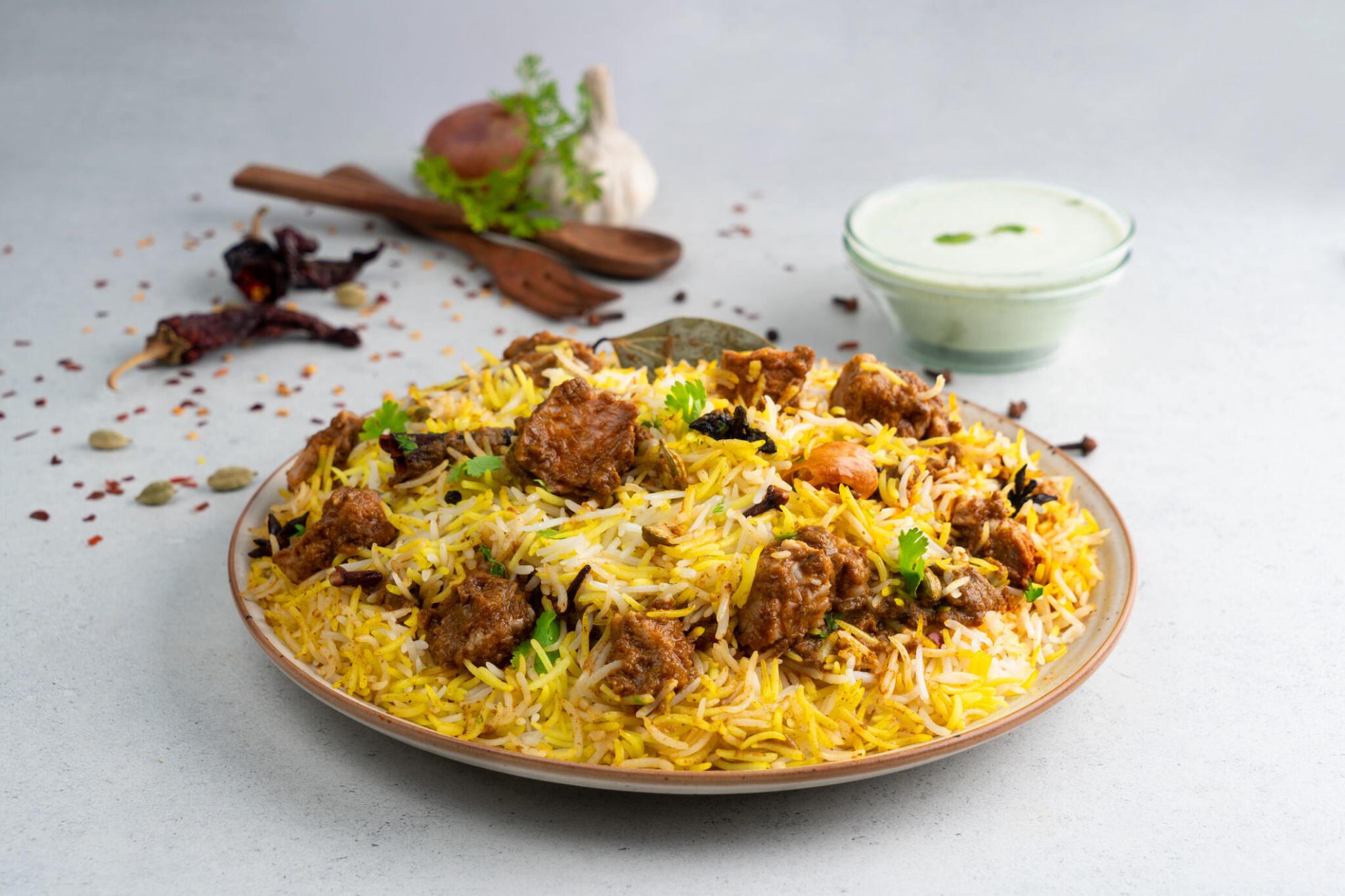Indian Favorite Food: Exploring a Rich Culinary Heritage
From aromatic spices to delectable curries, discover the essence of this vibrant cuisine by diving into the flavorful world of Indian favorite food.
Introduction
India, a melting pot of cultures and traditions, reflects its diversity beautifully through its cuisine. The term “Indian favorite food” encapsulates a variety of flavors, textures, and dishes that have captivated palates around the world for centuries. Explore the beloved delicacies that define the heart of Indian culinary traditions on this exquisite gastronomic journey.
Indian Favorite Food
Some of the most beloved dishes in Indian cuisine include:
- Biryani: A flavorful rice dish made with spices, meat (like chicken or lamb), and sometimes vegetables.
- Butter Chicken: A creamy and rich chicken curry.
- Masala Dosa: A thin, crispy pancake filled with spiced potatoes.
- Chole Bhature: A combination of spicy chickpeas and deep-fried bread.
- Rogan Josh: A type of curry usually made with lamb.
The dishes are widely enjoyed in India and are renowned for their rich flavors and use of a variety of spices. Please let me know if you require more information or any other kind of information.
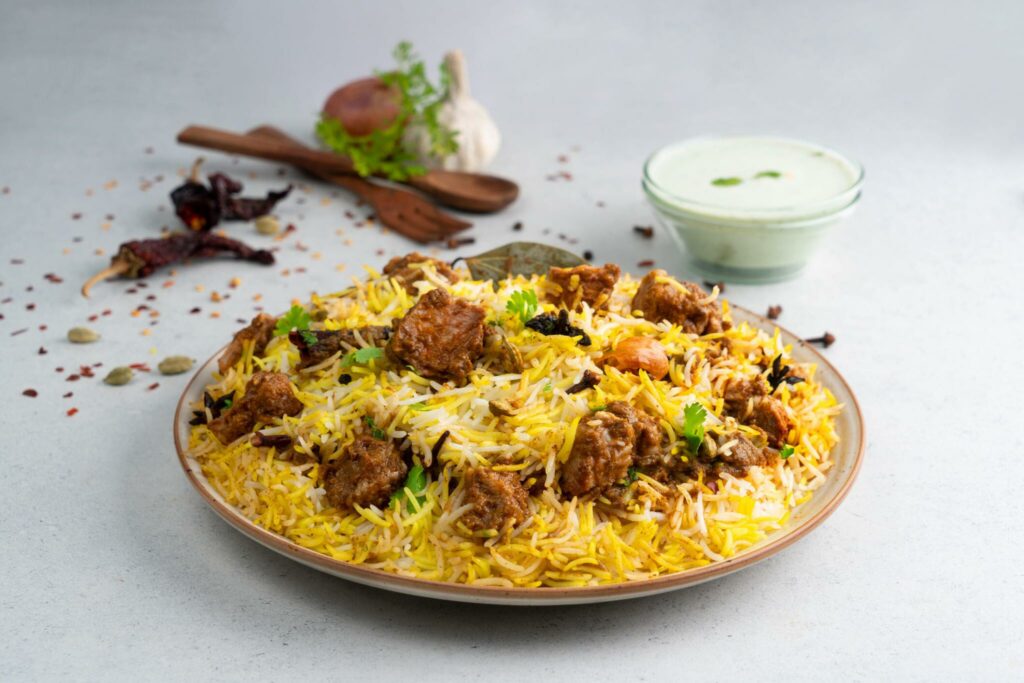
The Rich Diversity of Indian Cuisine| Explore in Detail
There is no doubt that India is one of the most culturally rich nations in the world, and that it boasts an equally rich culinary landscape. The culinary tapestry of India is a harmonious blend of flavors, techniques, and traditions, with each region offering a distinct cuisine.
North Indian Cuisine
- Punjabi Cuisine: From the land of five rivers, Punjabi cuisine celebrates flavors and indulgence. Rich, creamy gravies like dal makhani and butter chicken dance on the taste buds, while tandoori dishes are infused with tantalizing spices.
- Kashmiri Cuisine: There is no doubt that Kashmiri cuisine is a product of the scenic beauty of this region. Kashmiri cuisine is a delicate balance of sweet and savory flavors, with dishes such as aromatic Rogan Josh and the flavorful Yakhni that marry tender meats with a symphony of spices.
South Indian Cuisine
- Andhra Cuisine: The southern state of Andhra Pradesh elevates spice to an art form through its fiery curries, tangy pickles, and aromatic rice dishes that are characterized by bold and intense flavors.
- Kerala Cuisine: In Kerala, which is known as “God’s Own Country,” the coconut-infused curries, seafood specialties, and the appam with stew are a medley of flavors that capture the essence of coastal living.
Culinary Heritage Beyond Borders
Indian cuisine extends far beyond these delineated regions. Each state, district, and even household has its own culinary traditions, influenced by local ingredients, history, and culture. Every corner of India offers a unique spice to the nation’s culinary mosaic, from fiery chettinads from Tamil Nadu to delectable sweets from Bengal.
Fusion and Adaptation
Furthermore, Indian cuisine has evolved over the centuries as a result of cultural exchanges and trade routes. The Mughal influence introduced the rich and aromatic biryanis and kebabs, while the Portuguese left their mark on Goan cuisine with dishes such as vindaloo and xacuti. A dynamic and vibrant food culture has resulted from this fusion of culinary traditions.
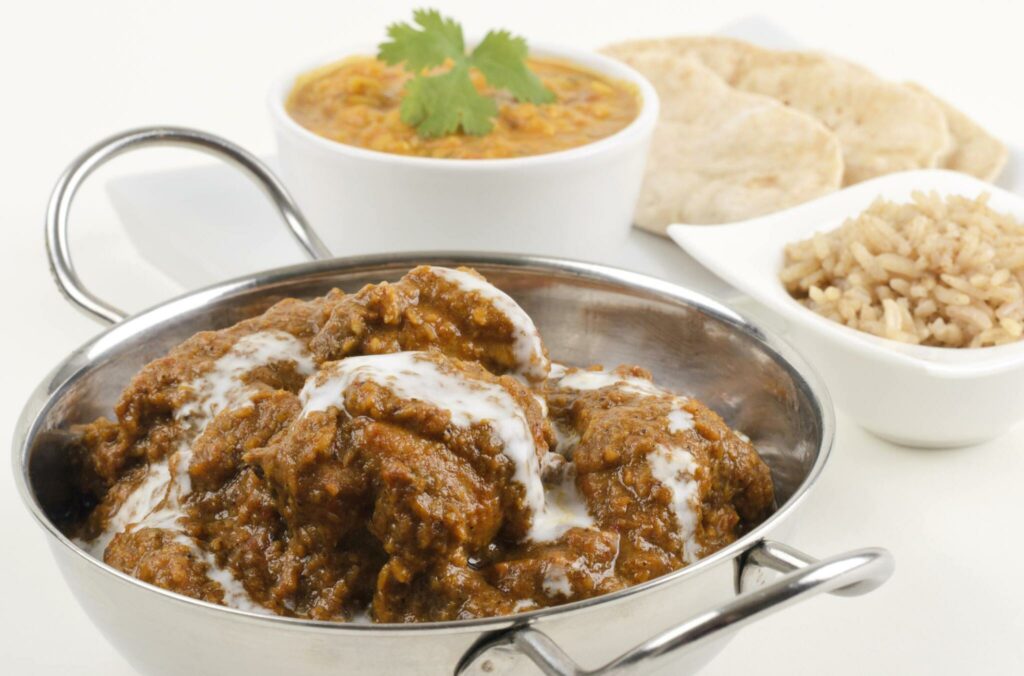
Spices: The Heart of Indian Cooking
Indian cuisine is defined by its spices, which provide a wide variety of flavors that give each dish its own unique identity. These vibrant, aromatic ingredients are the soul of Indian cuisine, bringing depth, complexity, and unique flavor to every dish.
Essential Spices in Indian Cooking
Turmeric
Turmeric is a golden-hued spice revered not only for its color but also for its medicinal properties. Turmeric lends a warm, earthy flavor to curries, rice dishes, and marinades.
Cumin
The warm, nutty flavors of cumin seeds or powder are essential to Indian cuisine, enhancing the flavor of soups, stews, and spice blends such as garam masala.
Coriander
Fresh cilantro leaves and seeds provide a fresh, citrusy taste that complements other spices. They can be used in marinades, chutneys, and as a garnish.
Cardamom
It is available in both green and black varieties. Cardamom is used in many dishes, both savory and sweet. It is a key ingredient in biryanis, desserts, and masala chai.
Red Chili Powder
It adds heat to dishes, transforming them from mild to fiery. Red chili powder is a crucial component of curries, marinades, and spice blends.
The Art of Spice Blending
Garam Masala: Garam masala is a mixture of spice like cinnamon, cardamom, cloves, and more that adds depth and warmth to dishes. Each region and household has its own blend, contributing to the diversity of Indian cuisine.
Curry Powder: Spices commonly used in curry powder include turmeric, cumin, coriander, and other spices. It’s a versatile seasoning that can be used in a variety of cuisines around the world.
Iconic Indian Dishes That Mesmerize Taste Buds
There are a number of iconic dishes that adorn India’s culinary landscape, tantalizing and capturing the senses to offer a delightful journey through a variety of flavors and textures.
Butter Chicken – A North Indian Classic
Butter chicken, or murgh makhani, is a quintessential North Indian delicacy that originated on Delhi’s bustling streets. A silky tomato-based gravy enriched with butter and cream is the basis for this dish, which exudes indulgence with every bite. Tender pieces of marinated chicken are simmered in a velvety tomato-based gravy.
Flavor Profile: The butter chicken’s luscious sauce, infused with aromatic spices, makes it a crowd favorite worldwide. It is creamy, tangy, and mildly spicy.
Masala Dosa – A South Indian Staple
It is a crisp, golden-brown crepe originating in the southern state of Karnataka stuffed with spiced potato filling made from fermented rice and lentil batter. This dish represents the heart of South Indian cuisine and is served with coconut chutney and tangy sambar.
Flavor Profile: A crispy exterior, a soft interior, and a harmonious combination of savory potatoes and aromatic spices make masala dosas an irresistible breakfast or snack.
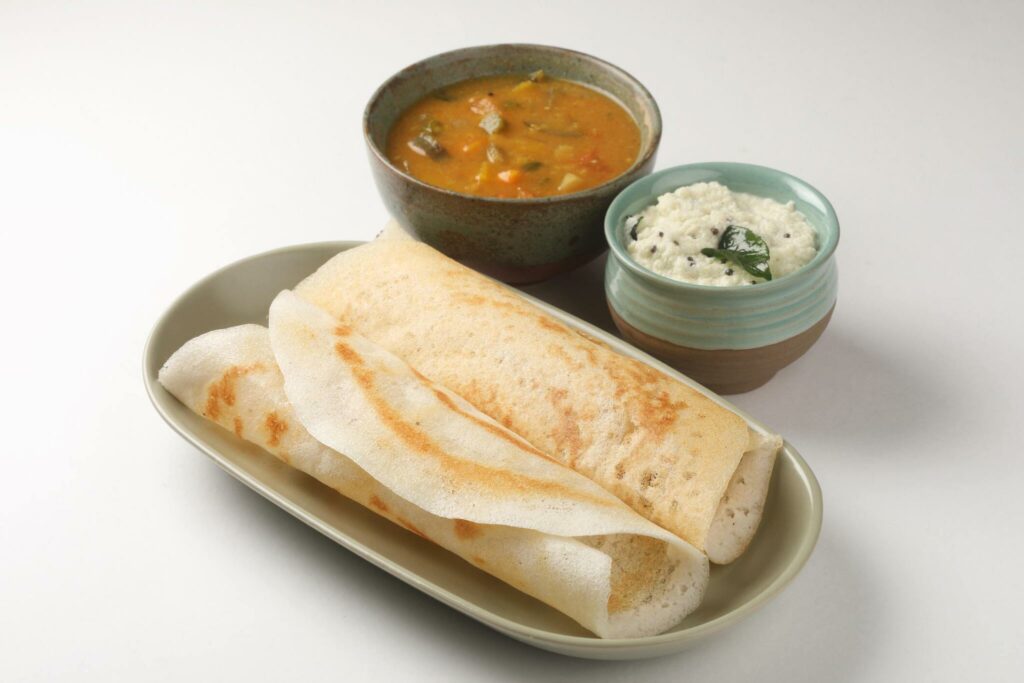
Biryani – A Fragrant Rice Dish
With origins dating back to Mughlai cuisine, biryani is a fragrant rice dish layered with marinated meat, aromatic spices, caramelized onions, and fresh herbs. Each region in India offers its own version, showcasing a symphony of tastes.
Flavor Profile: The marriage of spices with tender meat or vegetables creates a rich and comforting experience that is fragrant, aromatic, and bursting with flavors in biryani.
Street Food: An Explosion of Flavors
A tantalizing world of street food awaits in the bustling streets and vibrant markets of India, offering a symphony of aromas, tastes, and textures that awaken the senses and ignite a culinary adventure.
Chaat – The Tangy Delight
It was originally found on the streets of Delhi, but has evolved into a variety of regional variations throughout the country. Featuring crisp fried dough, chickpeas, potatoes, yogurt, chutneys, and a melange of spices, this tangy medley tantalizes the taste buds with its sweet, tangy, and spicy flavors.
Flavor Profile: Chaat is a delicious dish filled with contrasting textures and vibrant flavors resulting from the tanginess of tamarind, the spice of chili, and the cooling effect of yogurt.
Vada Pav – Mumbai’s Favorite Snack
Vada Pav consists of a spiced potato dumpling (vada) stuffed within a soft pav, a local bread roll. This handheld delight is served with a variety of spicy chutneys that add layers of flavor to each bite.
Flavor Profile: With its crisp exterior and soft, flavorful interior, vada pav embodies the perfect balance of spicy, savory, and tangy flavors, making it an iconic street snack enjoyed by Mumbaikars and tourists alike.
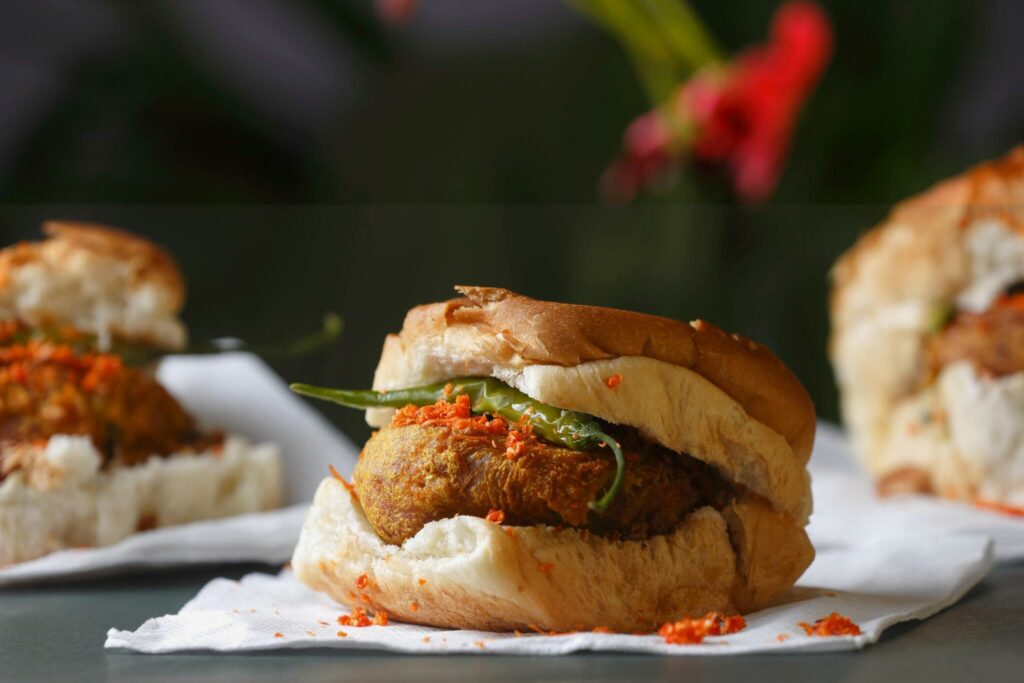
The Culinary Tapestry of Indian Streets
From the sizzle of sizzling kebabs to the aroma of dosas being prepared on hot griddles, Indian street food consists of much more than these two iconic dishes. Whether it is the spicy tang of golgappas or the comfort of pav bhaji, each dish tells a story of innovation and tradition, demonstrating the vibrancy of Indian street cuisine.
Influence of Culture and Tradition on Indian Cuisine
Cultural Mosaic in Culinary Delights
Throughout its history, Indian cuisine has reflected a rich tapestry of cultures and traditions that have shaped its unique flavors. It is more than just a collection of recipes. It is also a reflection of historical influences, regional traditions, and family traditions.
- Regional Diversity: There is a distinct culinary heritage in every state, city, and community in India, influenced by local produce, climate, and cultural practices. From the robust flavors of Punjab to the delicate spices of Kerala, every region of India contributes a unique element to Indian cuisine.
- Historical Impact: Indian cuisine has been shaped by centuries of cultural exchanges, invasions, trade routes, and colonialism. Mughal influences introduced aromatic spices, Persian-inspired dishes such as biryani, and rich gravies to Indian cuisine, while colonial influences introduced ingredients such as potatoes, tomatoes, and chilies.
- Traditional Practices: The Indian cuisine is steeped in tradition, passed down from generation to generation. Techniques such as slow cooking in earthen pots, blending spices, and using seasonal ingredients illustrate the respect that Indian chefs have for their culinary heritage.
- Rituals and Festivals: During Indian weddings and festivals, food plays an important role in rituals and celebrations. From elaborate feasts to ritualistic sweet preparation during festivals like Diwali, food symbolizes unity, joy, and abundance.
FAQs
What makes Indian cuisine unique?
The uniqueness of Indian cuisine lies in its diverse flavors, spices, and regional specialties, reflecting the country’s rich cultural heritage and reflecting the country’s rich culinary history.
Is Indian food always spicy?
Despite the fact that spices are at the core of Indian cuisine, not all dishes are hot. Some regions are known for more mild flavors, offering a wide variety of dishes to suit different palates.
What are must-try dishes for someone new to Indian food?
You may want to start exploring Indian cuisine by trying some of the most popular dishes such as Butter Chicken, Masala Dosa, and Vegetable Biryani.
Are Indian street foods safe to eat for tourists?
There is no doubt that enjoying Indian street food on a tourist trip can be an enjoyable and safe experience for those who exercise proper caution and select reputable vendors.
How do cultural influences shape Indian cuisine?
There is a wide variety of culinary influences in Indian cuisine, ranging from traditions, history, and regional influences, allowing the country to showcase its cultural diversity through its cuisine.
Conclusion
The essence of Indian cuisine transcends the mere act of eating; it is a celebration of diversity, history, and innovation. Each dish narrates a story—a tale of cultural amalgamation, resilience, and the artistry of generations. In addition to its rich history and flavorsome journey, Indian cuisine is more than just about flavors. It serves as a manifestation of the country’s soul.

